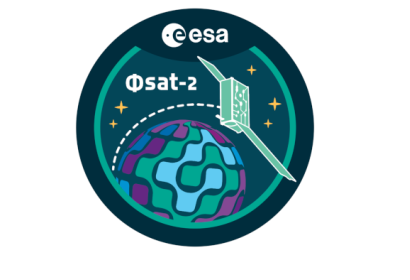Update (19 August 2024): Φsat-2, ESA’s cubesat designed to use Earth observation with artificial intelligence, has launched. The cubesat embarked on its journey into space on 16 August on board a SpaceX Falcon 9 rocket from the Vandenberg Space Force Base in California, US. At 21:50 CEST, Φsat-2 deployed from the launch vehicle and at 23:47 CEST the Svalbard ground station in Norway received the important signal indicating that Φsat-2 is now safely in orbit.
Original Article (11 July 2024): In a significant advancement for space technology, the European Space Agency (ESA) is set to launch Φsat-2, a cutting-edge Earth observation satellite designed to demonstrate the transformative potential of artificial intelligence (AI). Scheduled to liftoff in July 2024, Φsat-2 represents a new era in real-time, AI-powered Earth observation.
Φsat-2 is equipped with a multispectral camera and a powerful AI computer capable of analyzing and processing imagery in real-time. Building on the success of its predecessor, Φsat-1, launched in 2020, Φsat-2 aims to explore the full benefits and capabilities of extended onboard processing. The mission promises smarter and more efficient ways of monitoring our planet, providing actionable insights for scientists, businesses, and policymakers.
The satellite features six AI applications, each tailored to deliver specific insights:
- Cloud Detection: This application ensures that only clear, usable images are downlinked by processing images directly in orbit. It also classifies clouds and provides insights into cloud distribution.
- Street Map Generation: The application converts satellite imagery into street maps, aiding emergency response teams during disasters by identifying accessible roads.
- Maritime Vessel Detection: The application uses machine learning to detect and classify vessels, enhancing maritime security and environmental conservation efforts.
- Onboard Image Compression and Reconstruction: The application compresses images onboard, increasing data download efficiency. Once on the ground, images are reconstructed, focusing on detecting buildings.
- Marine Anomaly Detection: This application can spot anomalies in marine ecosystems, such as oil spills and harmful algae blooms, in real-time.
- Wildfire Detection: Using machine learning, this application can provide critical real-time information for wildfire response teams, tracking fire spread and identifying potential hazards.
Impact on Disaster Management
The advanced capabilities of Φsat-2 are set to benefit disaster management activities. By providing real-time, actionable data on cloud cover, street accessibility during emergencies, maritime activities, marine ecosystem health, and wildfire detection, Φsat-2 can play a crucial role in enhancing disaster response and mitigation strategies worldwide.
The integration of AI in Earth observation satellites like Φsat-2 not only exemplifies technological innovation but also underscores the vital role of space technology in addressing global challenges.
For more information on the Φsat-2 mission and its groundbreaking AI applications, visit the ESA website.

